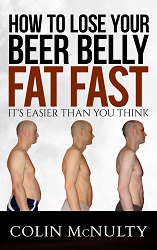This question is important as Dr Sear’s Zone Diet lists egg yolks as one of the few foods that are not recommended. The reason is their high concentration of Arachidonic Acid (AA) and much of the Zone Diet is geared to reducing your levels of AA whilst increasing your levels of the long chain Omega 3 fatty acid: EPA.
It turns out however that this is a hard question to answer, as much of the information available is contradictory. A few key terms here: EPA has 20-carbon chains and DHA has 22-carbon chains and are known collectively as “Long Chain Omega 3“, whereas ALA has 18-carbon chains and is known as “Short Chain Omega 3“. EPA and DHA are mostly derived from oily fish and ALA is mostly derived from plant sources, typically flaxseed oil. Whilst our body is capable of making EPA and DHA from ALA, it’s a very inefficient process, so generally the Zone Diet considers ALA as a poor substitute for EPA & DHA. On the flip side, Arachidonic Acid (AA) is a long chain Omega 6 fatty acid.
On to my search for answers:
This article shows the breakdown of Omega 3’s on many foods, and shows no EPA or DHA in egg yolks, only the poor mans Omega 3, short chain ALA: http://www.commonvoice.com/article.asp?colid=5978
This article discusses how Omega 3 is added to egg yolks via adding flax seed to the hens diet: http://www.flaxcouncil.ca/english/index.php?p=food5&mp=food again this is poor ALA Omega 3.
This article only mentions egg yolks as a source of DHA, not EPA: http://www.naturalnews.com/016353.html
This article does mention that egg yolks can contain long chain EPA and DHA, however it lists DHA first over EPA, and also points out that they are in the minority to ALA: http://www.encyclopedia.com/doc/1G1-169636932.html
This article on a new high omega 3 egg yolk, again lists eggs as having EPA and DHA, but again they are in the minority to ALA: http://www.foodnavigator.com/news/ng.asp?n=81244-omega-dha-frost-sullivan
Dr Sears bases most of his advice on the AA/EPA ratio of your blood. Read Chapter 9 “Your Blood Will Tell Your Future” in the OmegaRX Zone book. So he has a 2 fold approach: increase your EPA and decrease your AA to change the ratio.
This is all important because as some studies suggest that organic / free range eggs have a significantly different proportion of Omega 6 (AA) to Omega 3 (1:1 compared with battery eggs which can be 10:1), and if the Omega 3 side contains EPA in reasonable proportions, then the AA/EPA ratio could be within reasonable bounds. If you’ve read the books, you’ll recall that the target AA/EPA ratio in your blood is 1.5. So if an organic egg is rich in Omega 3 and low in Omega 6, and has a high EPA component, then the AA/EPA ratio could be in within acceptable Zone bounds.
However I don’t think my research backs up this theory. Some of the sources don’t list EPA at all as occurring in egg yolks. Some sources only list DHA as occurring in egg yolks, and those that do list EPA, show it as the minority Omega 3 component, behind DHA which is behind ALA. Worse it appears that there is a growing tend to supplement hen feed with flaxseed in order to artificially boost the levels and jump on the “High in Omega 3” band wagon.
In conclusion then, I am happy that even organic / free range egg yolks are a poor source of Omega 3, don’t support the correct EPA/AA ratios we should be aiming for, and therefore (strictly speaking) should be avoided due to their high Omega 6 / AA content.
As it happens, I don’t take the egg yolks out when I have an omelette, but that’s because my average egg intake is probably less than 1 per week. If I was having omelettes every other day say, then I would be concerned about the yolks.

